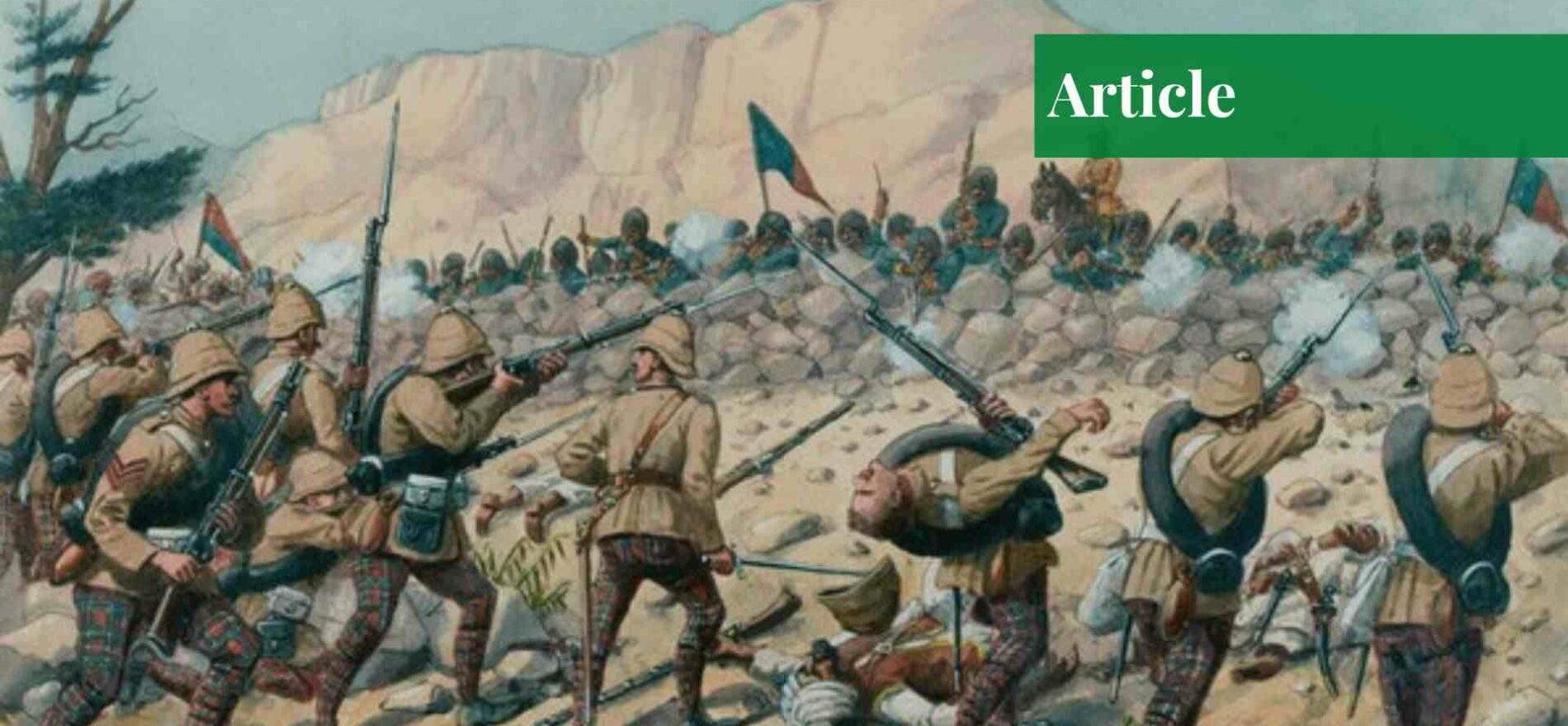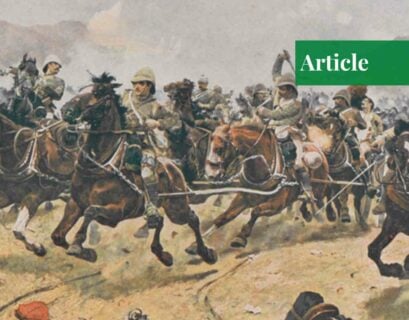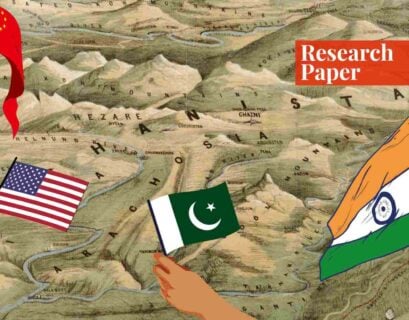Ms. Amina Iqbal is studying international relations at Kinnaird College for Women University, Lahore.
Introduction
During World War I (1914-1918), huge support for Ottoman Turkey existed in Afghanistan against the British, and the king at that time was Habibullah Khan, who maintained the policy of non-involvement. However, after his assassination, his son Amanullah Khan became the ruler and ascended to the throne. Moreover, in his coronation address, he declared total independence from Great Britain. As a result, this declaration led to the outbreak of the Third Anglo-Afghan War, characterized by skirmishes between an inefficient Afghan Army and a British Indian Army depleted from the strains of World War I.
Despite the limited military engagements, the war resulted in Afghanistan gaining full sovereignty over its affairs. Furthermore, a peace treaty was signed on 8 August 1919 in Rawalpindi, with amendments made in 1921. Afghanistan also forged a friendship treaty with the new Bolshevik Regime in the Soviet Union and became one of the earliest countries to recognize the Government of the Soviets. Therefore, this resulted in a “special relationship” between both states until December 1979, when the Soviets attacked Afghanistan during the Afghan War.
Factors Leading to the Outbreak of the Third Anglo-Afghan War
The significant factors that led to the outbreak of the war in 1919 are mentioned below:
1. Amanullah Khan’s Background and Rise
In February 1919, Amanullah ascended to the throne, succeeding his father Habibullah, whose reign lasted from 1901 to 1919. After his father’s death, Amanullah and his Uncle Nasrullah fought it out for the throne. However, Amanullah was able to maintain authority and ward off any opponents due to his quick consolidation of power. Moreover, vital, regional, and international geopolitical, changes, like those brought about by the end of World War I, and the emergence of nationalist movements, coincided with the beginning of his reign.
2. Motivations for War
A complex decision was made by Amanullah when he launched a war on the British Empire, which sparked the Third Anglo-Afghan War. Although some speculated that the dispute functioned as a means for establishing authority and allayed suspicions regarding his father’s murder, Amanullah’s ideological proclivities toward Afghan nationalism as well as modernization were essential. Furthermore, he was highly influenced by different reformers, such as his father-in-law Mahmud Tarzi, who believed that liberating Afghanistan from British diplomatic rule, which had been in place since the Second Afghan War, was extremely crucial for the state’s modernization.
3. Geo-strategic Aspects and Global Context
The post-World War I geopolitical landscape, marked by British fatigue and widespread dissatisfaction with colonial governance, presented an ideal backdrop for Amanullah’s ambitions. In addition, the British Empire faced several challenges—in Egypt, India, Ireland, and Afghanistan. The revival of the Indian independence movement, which was made worse by events like the Jallianwala Bagh Massacre, fueled Amanullah’s war efforts. His attempts to make the Afghan identity stronger and to encourage collaboration with Indian militants struck a chord with greater anti-colonial sentiments.
4. Religious and Tribal Relationships
The intricate religious and ethnic tensions along the Afghan-British frontier further added a layer to Amanullah’s aspirations. His uncle, Nasrullah, had developed connections with clerics on the eastern frontier, which had fueled the religious zeal of the Pashtun tribes. Therefore, this religious radicalism offered both chances and problems for Amanullah’s nationalist aim. However, he was cautiously confident about the possible benefits of tribal coalitions despite his modernist goals.
The Course of War
Britain’s Mobilization and Initial Interactions
Amanullah fully supported the nationalist upheaval that was escalating in India, and he was supporting it because he wanted to benefit from it. As a result, Afghan forces were sent to India on 3 May 1919, which initiated the hostilities between Afghanistan and the British Empire.
The British became aware and quickly mobilized their troops due to Amanullah’s support for nationalist activists in India and his association with the Bolshevik Regime in Russia, which was Britain’s long-standing enemy in the region.
Additionally, in the tribal regions of Chitral, occasional violence broke out, but British soldiers were able to put those to rest. The Khyber Pass, the main mountain between British India and Afghanistan, was the key source of conflict.
Khyber Pass’ Engagement
A division from Peshawar swiftly engaged and routed a larger Afghan force that had taken over Bagh and invaded Landi Kotal at the western end of the Khyber Pass despite lacking enough troops, artillery, and machine guns. However, the Afghan attack was repelled by British soldiers who compelled them to retreat across the border and into Jalalabad.
Furthermore, the town of Dakka became the key point of the dispute, where the poorly positioned British camp came under Afghan artillery bombardment, which was followed by an infantry assault. The British army was able to secure the region by 17th May 1919 by effectively holding their position and launching a counteroffensive attack.
Spin Baldak’s Capture in Baluchistan
The British troops attacked the Afghan fortress of Spin Baldak on 27th May 1919, which was protecting a strategically significant route connecting Kandahar and Quetta in the south of Baluchistan. This rapid move significantly reduced the likelihood of an Afghan attack via that path. Furthermore, 200 Afghan civilians sacrificed their lives in the ferocious struggle, which also claimed the lives of 18 British soldiers. This underscored the importance of Spin Baldak from a strategic standpoint.
Escalation of Conflict in Waziristan and Kurram
The tension in the region increased as the biggest Afghan offensive took place in the Tochi Kurram valley area. The situation deteriorated when military forces in neighboring Waziristan revolted against their British employers after being incited by the Government of Afghanistan.
From 26th May till 30th May 1919, Major Guy Hamilton Russel, who was leading the “South Waziristan Militia,” carried out a combative withdrawal from Wana to Fort Sandeman. However, his troops suffered huge losses as 40 men were killed and injured, 5 of which were British officers.
Under the command of General Nadir Khan the Afghan forces were laying siege to Thal, which was in charge of securing the Kurram Pass. The garrison was composed of 4 battalions of Sikhs and Gurkhas at half-force as well as a cavalry squadron that courageously held its area for a week until reinforcements arrived, led by Brigadier-General Reginald Dyer, who was infamous for his role in the Amritsar Massacre.
Airpower and Negotiation
Throughout the war, airpower played a significant role, with 5 squadrons of the Royal Air Force conducting bombing as well as strafing missions against insurgent border tribes and Afghan objectives, mainly in Jalalabad and Kabul. Although the scope of these attacks was limited, they put pressure on Amanullah and ultimately led to him agreeing to conduct negotiations.
Ceasefire and Outcomes
On 3rd June 1919, Amanullah Khan ordered a ceasefire, signaling the end of casualties. In addition, the end of the war was marked with the signing of the “Treaty of Rawalpindi” on 8th August 1919.
The administration of Amanullah achieved a huge victory when the treaty acknowledged full independence of Afghanistan and allowed the state to manage its foreign affairs with complete sovereignty despite Amanullah’s extravagant ambitions of regaining Peshawar and driving the British out of India.
For the British Government, the treaty resolved a long-standing bone of contention by reinstating the Durand Line as the political border between Afghanistan and the North West Frontier. The Afghans also agreed to stop meddling with tribes on the British side of the border. Therefore, the conflict took a toll on all parties involved; the British and Indian troops suffered about 250 losses while 650 fighters were wounded. They lost roughly 1000 more due to sickness and disease.
Conclusion
The outbreak of the First World War led Afghanistan to align with the Ottoman Empire against the interests of the Britishers. A shift in leadership was observed with the assassination of Habibullah Khan when his son Amanullah Khan became the king. He immediately announced independence from Great Britain in 1919, which initiated the war. Despite being a small-scale conflict, it granted Afghanistan control over its foreign affairs. Additionally, the signing of the 1919 treaty marked a landmark moment by positioning Afghanistan on the international stage.
Throughout the Third Afghan War, the people of Afghanistan played a significant role in facing foreign challenges and external interference. Thus, the Anglo-Afghan wars served as a testament for Afghanistan to its historical struggles for sovereignty as well as independence.
If you want to submit your articles, research papers, and book reviews, please check the Submissions page.
The views and opinions expressed in this article/paper are the author’s own and do not necessarily reflect the editorial position of Paradigm Shift.



















